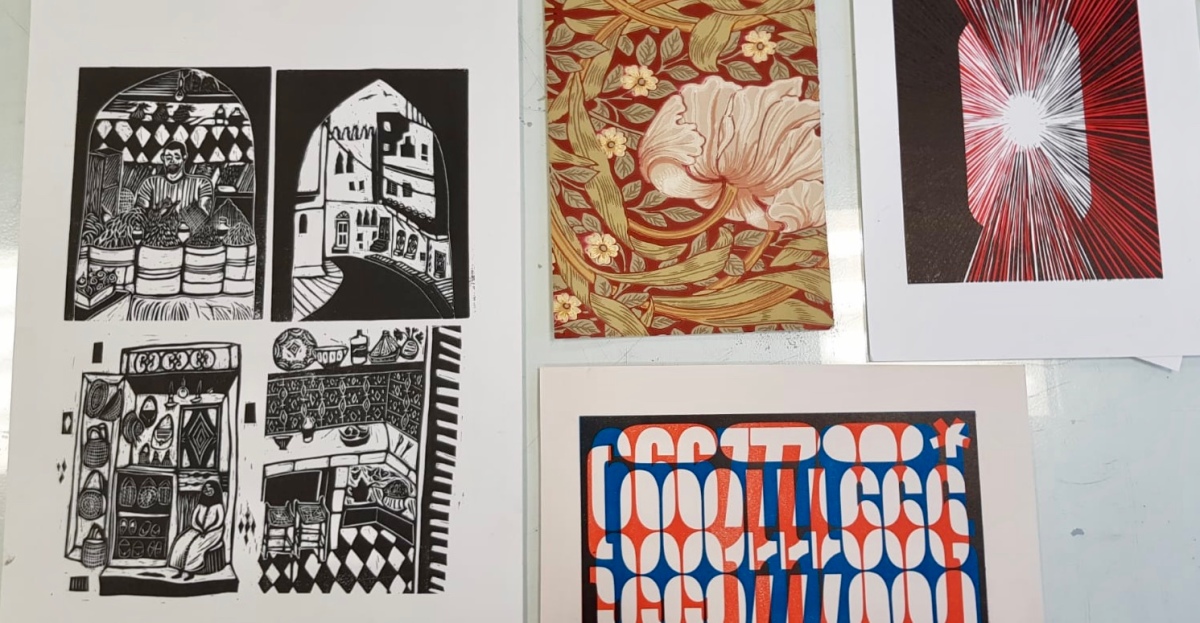08/10/2018
SIDE HUSTLE
- Have a conversation with a technician about what they do and how the space works.
- Book in for an induction in to the space through ORB and create an image in the space, this can form part of your ‘Side Hustle’ Project which will be briefed to you in week 2.
- Create an image of the technical space. with permission granted
When you have completed one of the three following tasks please create a blog post about it. Think about the following; Did it go smoothly? What did you find out about the space? Will you use it in future? Did you feel comfortable?
I walked into the third floor of the workshop block and met Kath, a new technician to LCC who was kind of enough to answer all my questions about the various techniques I was interested in. Armed with my technical passport she showed and explained the different printmaking techniques available at LCC. Overall it went smoothly and Im very excited to discover all the stations. I think printmaking is an essential practice to learn and develop, I believe it will give an edge to my work as well as my abilities as an artist. The space looks very professional, a mix of daunt, curiosity and unending possibilities filled me up and I can’t wait to get started. My mind was racing with ideas for personal and course work, simply put: the third floor of the workshop block is my oyster. She explained the following printmaking techniques available.
Relief:
This technique involves removing surface area from wood, lino or vinyl for example, then the ink sits on the surface and not in the grooves. This means the image is negative, what you remove won’t show. Those are the three main materials used and it that can expand from highly detailed to very abstract without ever losing the quality of this very distinct style. Warning: the image is also mirrored once printed, so text needs to be written backwards when making the image.

Planographic:
Planographic is when you print from a flat surface, it means everything happens on the same plane, ergo we don’t manipulate the surface like in intaglio or relief. There is monoprinting which is unique as each print is automatically an original, no same image can be replicated in the same exact way, hence the name mono meaning one. Its done by painting with stencils directly on to the matrix (or the surface that will be used to print). Next we have lithography a chemical printing practice, it manipulates the area where the image will appear and won’t. Water will wash way the non-image and the grease will stick the ink to the image, this is done typically on limestone. Its a cheap printing technique that has the advantage of conserving the original markings of brushes, pencils, charcoals, spray paint etc.
Intaglio:
The exact opposite of relief, the surface of the plate is incised and its the holes made which absorb the ink and from where the ink is on the plate will create the image. Its usually done on copper or zinc plater, some of the techniques include drypoint, engraving and etching. I was interested in solar plate etching. The same as the other techniques, its a positive images meaning the holes are the image and using a strong acid it will eat away the exposed part of the metal so the ink can seep in. The dark doesn’t expose and the image is printed on a film, its prized for giving the illusion of tone.

All in all, I think LCC has amazing facilities available to us and I will take full advantage of them, this was one of my reasons to transfer to this course. I want to explore each technique and produce a series of work from the ones I have the biggest affinity with. If there are two things that I take from my conversation with Kath are: take on one technique at a time and don’t call the imperfections of each technique imperfections, but characteristics.




